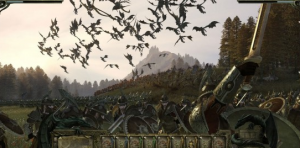Looking back at King Arthur II: The Role-Playing Wargame (Part 1)

King Arthur II: The Role-Playing Wargame has been satisfying the thirst of RTS game fans mixed with unique RPG. In this comeback, the great improvements in gameplay, graphics bring players more surprises than its predecessor. If not prepared, you can be overwhelmed when entering the world of King Arthur II.
The first version of the game, released in 2009, follows the legend of King Arthur with the sword Excalibur and the Holy Grail in his hand, which built his peaceful kingdom. However, from the beginning, the developers were not completely loyal to the original story in mythology, but brought in some additional creative elements.
During King Arthur’s comeback, Neocore Games dared to come up with an entirely new story of their own: King Arthur became ill, the Holy Grail was destroyed, leading to the forces of darkness being liberate and start conducting attacks on the kingdom, and you and nobody else – will be the one to prevent it from happening.
What makes players feel most interesting about the gameplay of King Arthur II is how manufacturers combine RTS with elements from other game genres without making it a copy of Total War.
 Each turn in your game will correspond to one of the four seasons of the year. In the spring, summer and autumn, players will be free to move around on the game’s map, and one thing to mention is that the size of the map in this part is twice as big as with the first version. Players will begin to receive and carry out missions through the map, and the results of these missions can lead to diplomatic disputes or major engagements. Something quite special here is that King Arthur II has a way of opening a rather strange task compared to today’s games: a word story.
Each turn in your game will correspond to one of the four seasons of the year. In the spring, summer and autumn, players will be free to move around on the game’s map, and one thing to mention is that the size of the map in this part is twice as big as with the first version. Players will begin to receive and carry out missions through the map, and the results of these missions can lead to diplomatic disputes or major engagements. Something quite special here is that King Arthur II has a way of opening a rather strange task compared to today’s games: a word story.
The narrator will read about the journey and the player will have to choose among the situations the game presents, such as crossing the forest by the main road or moving a small group through the trees secretly. , accept the mysterious man’s wagering challenge, etc. These auxiliary elements not only affect the task in progress, but also interact with the plot and ranking system later. In some cases, the clever completion of these all-letter missions will help you avoid war.

